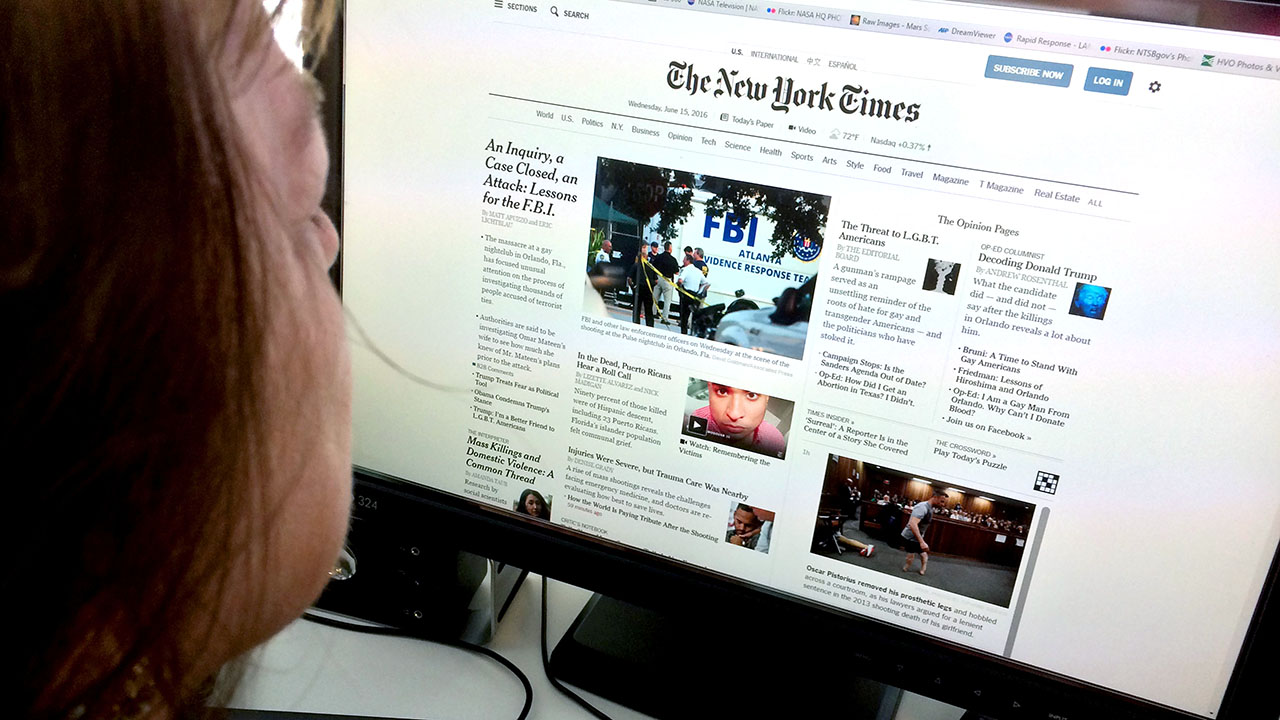Stay Informed with the most up to date Records from DW News
Stay Informed with the most up to date Records from DW News
Blog Article
The Evolution of Journalism in the Age of Information Online
In the quickly transforming landscape of journalism, the digital age has actually ushered in a brand-new age where the immediacy of online news improves both its creation and intake. As digital systems proliferate, they improve interactivity and broaden the reach of journalism, yet simultaneously test conventional standards with the speedy spread of info and false information alike. The increase of person journalists and independent voices additionally complicates the narrative, adding to a vibrant yet perilous media community. As we browse these complexities, one need to wonder regarding the future of journalistic honesty and how it can be secured among these transformative changes.

Increase of Digital Information Platforms
The increase of digital information platforms has actually basically transformed the landscape of journalism, noting a change from conventional print media to vibrant, online areas. This advancement was pushed by developments in modern technology and the enhancing access of the internet, which allowed information to be shared rapidly and extensively. Unlike their print equivalents, electronic platforms can instantaneously update content, supplying real-time information insurance coverage and analysis that interest the contemporary viewers's need for immediacy and relevance.
Digital platforms have actually additionally widened the scope of journalism, allowing a diversity of voices and viewpoints. With reduced barriers to entry, independent journalists and smaller sized information companies can reach global audiences, testing the syndicate when held by developed media empires. This democratization of information has actually improved the general public discussion, supplying differed stories and satisfying particular niche passions that were formerly underserved.
In addition, the assimilation of multimedia components such as video, audio, and interactive graphics enhances storytelling, making news more engaging and available (dw news). This multimedia approach not just brings in a more comprehensive target market but also help in the understanding of complicated stories. Basically, electronic systems have redefined journalism, fostering innovation and flexibility in an ever-evolving media setting

Impact of Social Network
Social network systems have actually better changed journalism by altering how news is consumed and shared. These platforms have equalized information circulation, making it possible for anyone with internet accessibility to report occasions in real-time. This immediacy has actually put standard information outlets in a race to maintain up, compelling them to adopt faster reporting methods. Additionally, social media has expanded target markets, providing reporters accessibility to worldwide viewership past geographical restraints.

The interactive nature of social networks fosters involvement, enabling audiences to take part in conversations, share opinions, and add to news stories. This interaction enhances the vibrant between reporters and their audiences, advertising a much more participatory form of journalism. Nonetheless, this likewise puts tremendous pressure on reporters to create web content that resonates with target markets, usually focusing on sensationalism to catch attention.
Moreover, social media platforms have come to be essential tools for journalists to source tales, determine public opinion, and network with market peers. The dependence on social media additionally necessitates a vital analysis of resources to guarantee the reliability of info shared.
Challenges of Misinformation
In the middle of the electronic change of journalism, one substantial obstacle is the prevalent spread of false information. In an era where information is swiftly accessible and abundant, differentiating in between reputable information and fabricated content has actually come to be significantly difficult. The sheer quantity of info disseminated throughout numerous on-line systems usually obscures the line in between truth and fiction, presenting a considerable danger to the stability of journalism.
Misinformation can spread out swiftly with social networks, where algorithms prioritize involvement over precision, inadvertently enhancing false stories (dw news). This not just undermines public rely on media institutions yet likewise fosters an environment where deceitful material can influence popular opinion and decision-making processes. The challenge for reporters is twofold: to expose falsehoods successfully and to support rigorous criteria of fact-checking and verification
More complicating this problem is the presence of deepfakes and innovative disinformation projects that utilize advanced innovations to create deceptive content tantamount from genuine coverage. As my link these innovations evolve, so need to the strategies and tools utilized by journalists to battle them. Addressing false information requires partnership in between media organizations, innovation firms, and policymakers to establish comprehensive methods that safeguard the authenticity of details in the digital age.
Function of Person Journalists
Navigating the landscape of false information highlights the transformative influence of citizen reporters within the electronic realm. As conventional media electrical outlets grapple with the sheer rate and quantity of information dissemination online, resident reporters-- ordinary individuals equipped with mobile phones and accessibility to social media-- are playing an increasingly essential duty. These grassroots factors have become important in covering occasions promptly, often offering real-time updates from the ground before mainstream media can react.
Resident journalists have equalized information coverage, intensifying voices that could or else stay unheard. By leveraging platforms like Twitter, Facebook, and Instagram, they offer varied viewpoints that test the stories often pushed by established media.
However, person journalism is improving the media landscape, compelling traditional outlets to adjust by incorporating user-generated material right into their coverage. By promoting neighborhood engagement and motivating participatory journalism, these electronic writers add to a more vibrant and inclusive news community. As person reporters proceed to advance, their function fit public discussion stays a necessary component of modern-day journalism.

Future of Journalistic Honesty
As the electronic age remains to progress, the future of journalistic stability deals with unprecedented challenges and opportunities. The spreading of electronic systems has democratized information circulation, allowing a broader variety of voices to add to the information landscape. Nevertheless, this has additionally led to the spread of false information and the erosion of rely on media. In this atmosphere, preserving journalistic stability becomes paramount, requiring adherence to rigorous ethical criteria and fact-checking processes.
The rise of man-made intelligence and algorithm-driven web content curation even more makes complex the landscape. While AI can improve reporting by examining vast datasets and recognizing trends, it additionally positions dangers of predisposition and adjustment. Journalists have to consequently stay vigilant, making sure that technology offers as a device for reality as opposed to distortion.
Furthermore, the monetary pressures on typical media electrical outlets necessitate cutting-edge service designs to maintain high quality journalism. Subscription-based models, not-for-profit funding, and partnerships with technology companies are arising as prospective options. Yet, they should be pursued without jeopardizing content independence.
Inevitably, the future of journalistic integrity depends on the dedication of media and journalists companies to support transparency, liability, and an unfaltering devotion to reality, among a quickly transforming digital globe.
Conclusion
The advancement of journalism in the digital age provides both obstacles and possibilities. The surge of digital news systems and social media has actually equalized information circulation, encouraging a diverse variety of voices, consisting of citizen journalists. Nevertheless, these innovations my site require cautious efforts to deal with false information and copyright journalistic stability. The future of journalism pivots on the ability to adapt ingenious organization models that sustain high quality coverage while keeping the reliability and depend on crucial for informed public discourse.
The increase of digital news platforms has essentially transformed the landscape of journalism, marking a shift from conventional print media to vibrant, on-line rooms. With reduced obstacles to access, independent reporters and smaller news organizations can reach global audiences, testing the syndicate as soon as held look at these guys by developed media corporations.Social media platforms have further revolutionized journalism by altering just how information is eaten and shared. As typical media electrical outlets grapple with the large speed and volume of information circulation online, resident reporters-- common individuals equipped with smartphones and accessibility to social media-- are playing a progressively critical duty. The rise of digital information systems and social media has equalized details circulation, equipping a varied selection of voices, consisting of citizen reporters.
Report this page